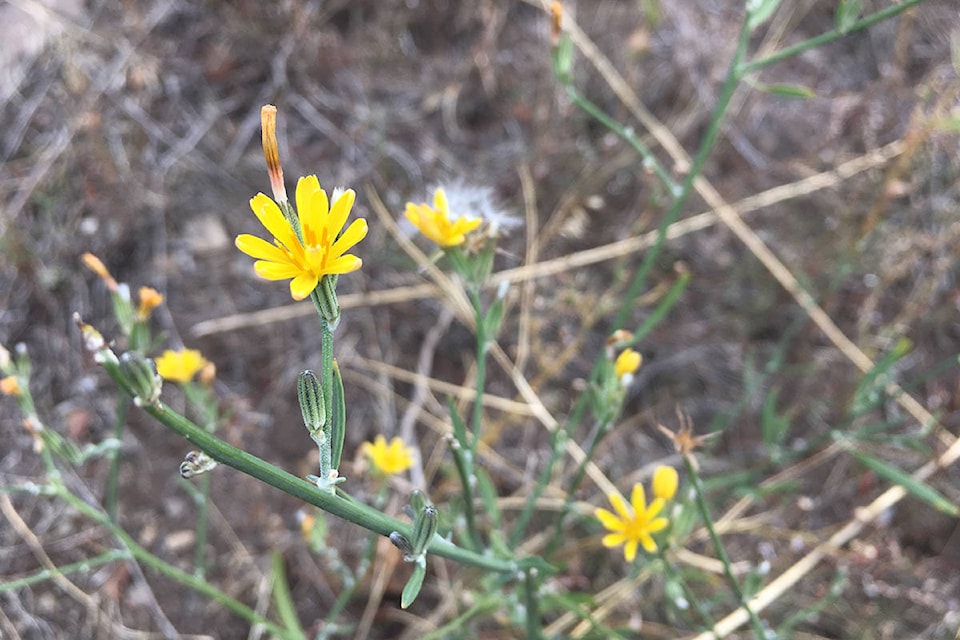Today we have for you, “The Mystery of the Rush Skeletonweed.” We’re not quite sure how exactly, it got here, only that it poses a real threat to local ranchers and wildlife.
Rush skeletonweed, chondrilla juncea, is a noxious weed that spreads by seed and horizontal roots. A single plant can produce up to 20,000 seeds.
Once introduced, it reduces forage for wild animals and livestock. it can bind up the machinery if it gets into hay fields. It typically grows in dry grasslands, range lands, roadsides and generally any dry disturbed area.
So far, it hasn’t spread into British Columbia from the infestation’s epicentre in Southern Washington State.
Part of the job of invasive plant management is figuring out how the plants are introduced, so that you can prevent their spread. In the case of rush skeletonweed, a single plant was found two years ago during some inventory in the Grand Forks area. The nearest plant that we knew of was over 100 kilometres to the south.
The plant was found on a hot, dry hillside. It’s doubtful that the plant was introduced by humans, given that there were no hiking trails nearby. Instead, it seems to have been brought in by grazing deer, even though there didn’t appear to be any game trails.
The plant can grow to be almost 1.5 metres tall. It has yellow flowers, wiry stems, and hardly any leaves.
We treated the plant we found on the spot, but its roots had spawned 11 new plants by the time we returned last year. These we treated as well, as we don’t want this aggressive plant spreading into the surrounding grasslands. So, the mystery continues as to how the first plant got to the site. We think there may be more in the Grand Forks area.
If you have seen rush skeletonweed in the Boundary we want to know!
You can text photos of suspected weeds to the Boundary Invasive Species Society’s cell phone at 250-446-2232.
For more information, please email us at info@boundaryinvasives.com, or look us up on Facebook. You can also visit our website www.boundaryinvasives.com.
